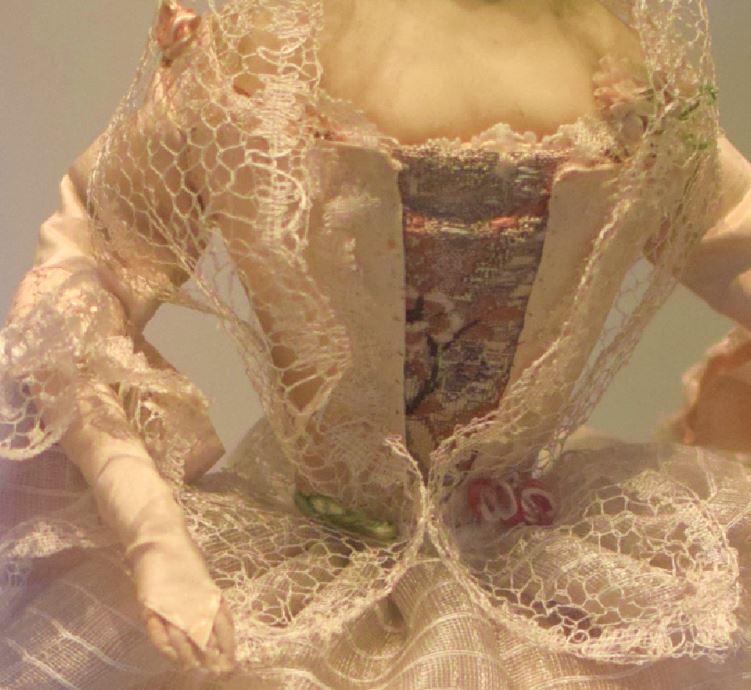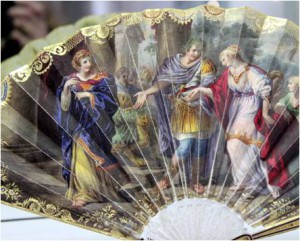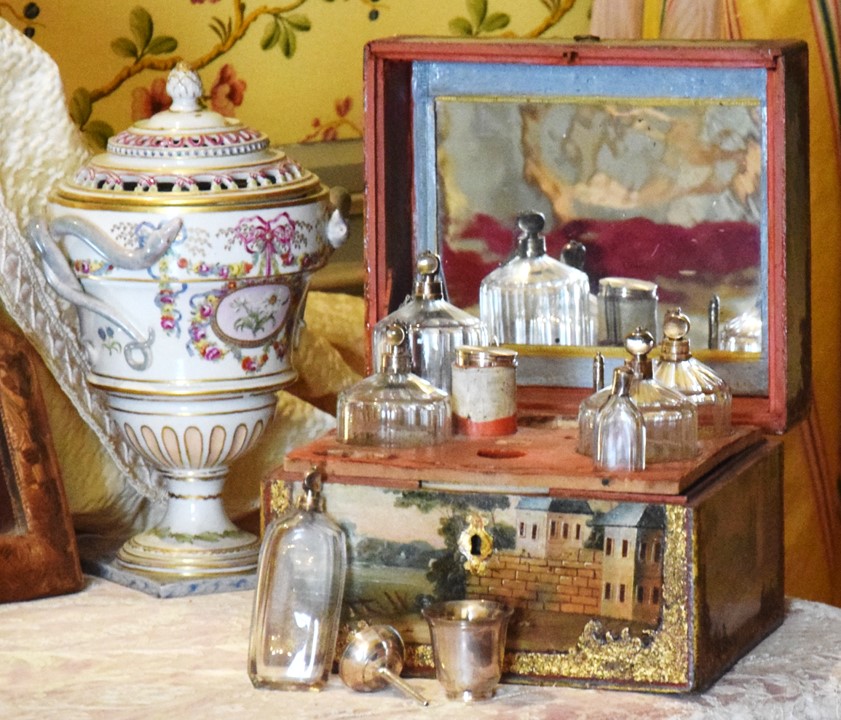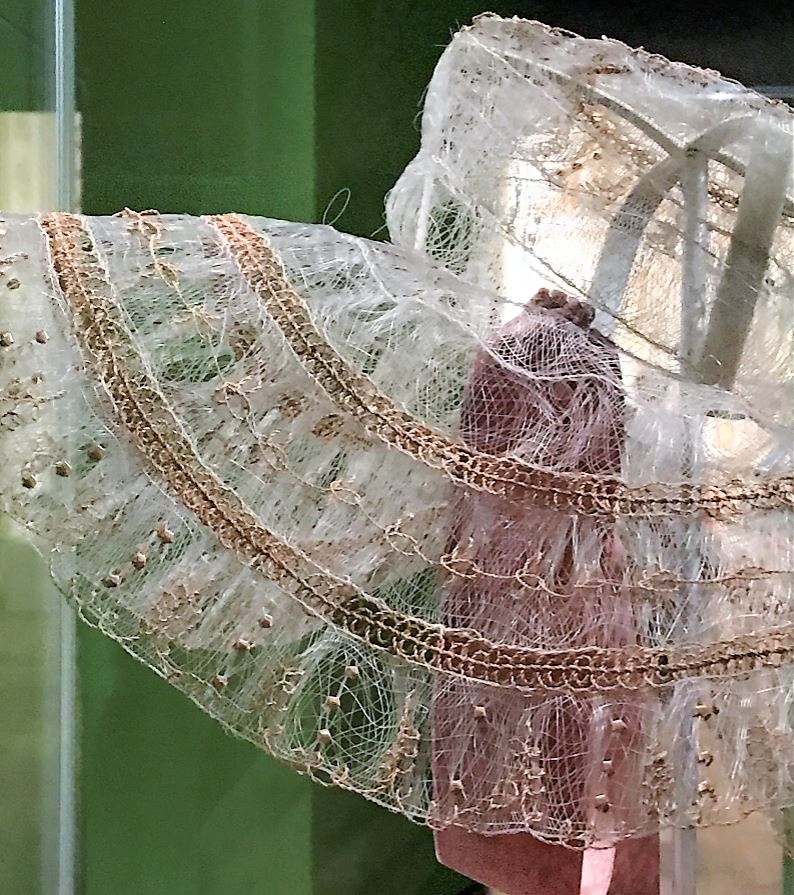 Fans are so much more than fashionable accessories: They are useful for flirting, can cool heated cheeks or hide an unladylike emotion. In the wake of the Napoleonic War, their usefulness was boosted beyond the known limit when fans were made for spying, i.e. discretely observing the surrounding or other persons. I found some examples of these extraordinary devices when I visited the exhibition “Waterloo: Life & Times” of the Fan Museum in Greenwich, UK.
Fans are so much more than fashionable accessories: They are useful for flirting, can cool heated cheeks or hide an unladylike emotion. In the wake of the Napoleonic War, their usefulness was boosted beyond the known limit when fans were made for spying, i.e. discretely observing the surrounding or other persons. I found some examples of these extraordinary devices when I visited the exhibition “Waterloo: Life & Times” of the Fan Museum in Greenwich, UK.
Results for Tag: Fashion
Marc Brunel’s shoe-making machinery

The first steps towards the mechanisation of shoemaking were taken during the Napoleonic Wars. In 1810, engineer Marc Isambard Brunel developed a machinery that could mass-produce nailed boots for the soldiers of the British Army.
How well did he succeed?
Dolls as toys and as mirror of fashion

Dolls have always been around. As a marketable toy for children, they became more and more elaborate in the 18th century. Dolls for the wealthy were elegantly dressed, including ruffles, panniers, rich lace and tiny shoes with buckles. True ambassadors of fashion were the so-called Pandora dolls, early mini-mannequins used by dressmakers to send their designs to customers.
Continue readingThe informal gentleman

When 18th century-people wore clothes that were called “undress”, it did not mean anything … incident. “Undress” was the word for informal fashion, something worn at home. However, “undress” in the time of Jane Austen was much more formal than today’s informal fashion is. The famous “banyan” – a morning gown for men – cannot be compared to a convenient jogging suit or a bathrobe. The banyan was an exquisite piece for gentlemen, proving their taste and wealth. It was perfectly fine for a host to receive friends and business partners when wearing a banyan.
Continue readingThe Unrivalled Beauty of the Hand-held Fan in the Romantic Age
 Sit back and enjoy photos of beautiful or interesting fans made between 1770 and 1815. Occasionally a plot bunny hops in, inspiring you to make use of fans in your Regency Novel.
Sit back and enjoy photos of beautiful or interesting fans made between 1770 and 1815. Occasionally a plot bunny hops in, inspiring you to make use of fans in your Regency Novel.
You can click on each photo to enlarge it. Continue reading
Fresh ideas for the fashionable head: the capote

A new form of hat vied for ladies’ favour around the turn of the 19th century: the capote. The soft, cap-like hat was first created around the late 1790ies. By 1804, the capote was quite commonly worn by women and girls. It enjoyed popularity until about 1815.
Continue readingWhen scents became seductive

France, center of fashion for all matters of beautiful living! In the 1. half of the 18th century, the court indulges in heavy scents. Perfume is a fashion statement as well as a necessity: scents are used to protect oneself from bad, contagious smells, and they are also a symbol of social power. But progress in medical knowledge leads to a new view on scents, and with this, new fragrances become fashionable. This so-called olfactory revolution is eagerly adopted by British noblemen and -women on their Grand Tour of the Continent …
Continue readingYou are not really dressed until you are wearing a hat

Dear time travelling gentleman on the way to the 18th century, please make sure to take with you one thing: a hat!
In the 18th century, a hat is not only useful in bad weather, and it is more than a fashion accessory. A hat indicates your role in society. Without a hat you are a nobody.
Follow me to a brief introduction to the history of 18th century hats. We make sure you pick the correct one for each period, and we also find out about hat etiquette.
Ladies’ Hats made from Horsehair

During the Regency period, horses seemed to be everywhere: They were indispensable partners for work, transportation, warfare, sport – and even for lifestyle and fashion. Horsehair from manes and tails was used for brushes, wigs and string instruments, and it was proceeded into haircloth. Haircloth was a great fabric for upholstery or for stiffening crinolines and the front panels of a suit. All these usages relied on the robustness of the material. But did you know that delicate ladies’ hats were made of horsehair, too?
Continue readingSign your name across my card
How to use a dance card in the Romantic Age

For a young lady few things would be more satisfying than being a sought-after dancing partner at a glamourous ball. But if she was in constant demand, how would she keep track of the partners engaging her for the waltz or the cotillion later in the evening? And how would a gentleman secure a dance with her?
Keeping track of the gentlemen who had promised a dance in the course of the evening was done – on the Continent – with the assistance of a so called ‘carnet de bal‘ (a dance card). A gentleman would ask a lady to write down his name on the card a for a specific dance. These small and often precious carnets de bal were very popular in France and Austria throughout the 18th century.
In Britain, the dance card became fashionable at around the turn of the 18th century. The carnet de bal initially was often less elaborate than the Continental model.
